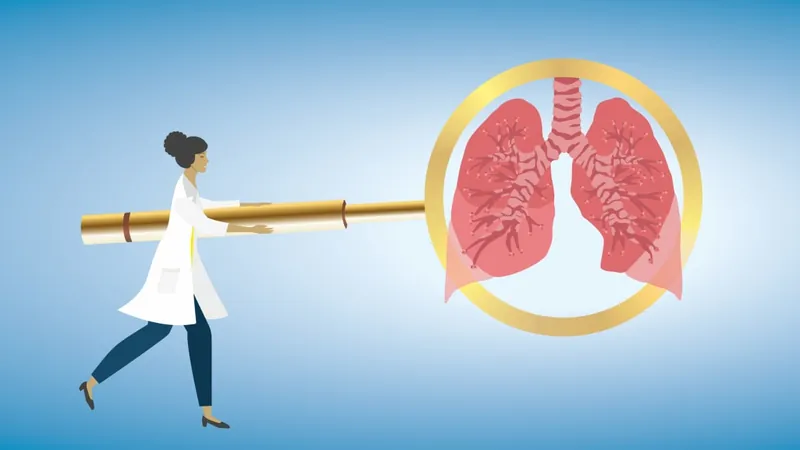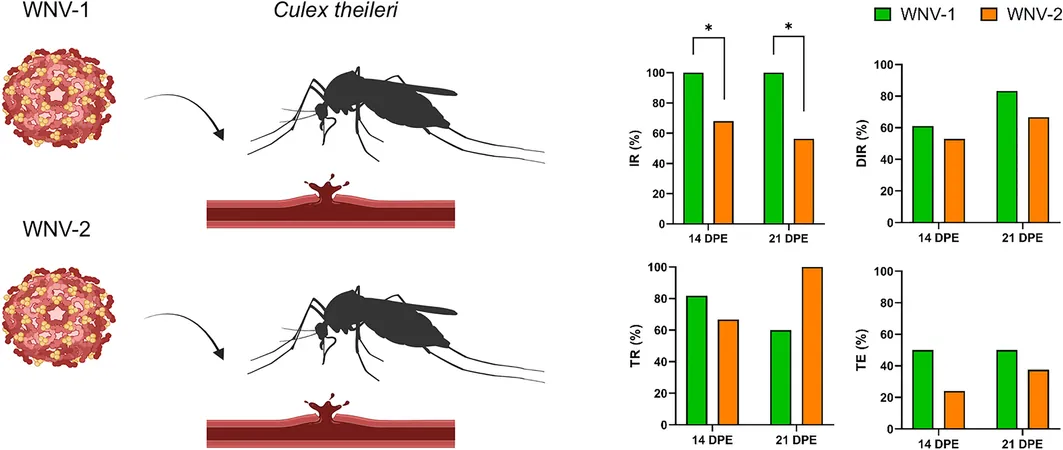
The Open-Source AI Revolution: Boltz-1 Set to Transform Biomedical Research
2024-12-28
Author: Nur
The Open-Source AI Revolution: Boltz-1 Set to Transform Biomedical Research
In a monumental leap for biomedical innovation, researchers at the Massachusetts Institute of Technology (MIT) have introduced Boltz-1, a fully open-source AI model that promises to redefine how we conduct biomedical research and develop drugs. Named after physicist Ludwig Boltzmann, the model aims to democratize biomolecular modeling, making advanced tools accessible to scientists and researchers worldwide.
Boltz-1 emerges as a significant alternative to DeepMind's AlphaFold3, the latest iteration of its generative AI model renowned for its remarkable precision in predicting the intricate three-dimensional structures of proteins and various biological molecules. This pioneering project was spearheaded by MIT graduate students Jeremy Wohlwend and Gabriele Corso, alongside Research Affiliate Saro Passaro, and Professors Regina Barzilay and Tommi Jaakkola. By combining their expertise, the team has created a tool that breaks down barriers to cutting-edge research.
Why Protein Structure Prediction Matters
Proteins are fundamental to all biological processes, with their functions intricately linked to their three-dimensional shapes. Correctly predicting these structures is critical for drug design, understanding disease pathways, and engineering proteins for specific functions—a challenge that has historically been a major hurdle in the field. The advent of AI technologies like AlphaFold2 marked a significant turning point, allowing for unprecedented accuracy in protein structure predictions. This groundbreaking work earned its creators the 2024 Nobel Prize in Chemistry, highlighting the importance of AI in advancing life sciences.
Given AlphaFold3's limitations in open-source access, Boltz-1 seeks to bridge this gap, equipping researchers with tools needed to push the boundaries of scientific discovery. Boltz-1 builds on concepts established by AlphaFold3 but utilizes advanced generative AI techniques, including diffusion models, to mitigate uncertainties related to protein folding predictions. The addition of inventive algorithms enhances both accuracy and efficiency, achieving parity with AlphaFold3 while maintaining essential accessibility.
Transforming Drug Development Landscape
The launch of Boltz-1 has ignited excitement within the scientific community. By reducing barriers to advanced modeling tools, it opens the door for collaboration among researchers from varied disciplines to expedite breakthroughs in structural biology. Mathai Mammen, CEO of Parabilis Medicines, has praised Boltz-1 as a vital innovation that will democratize access to essential tools in structural biology, promising to catalyze transformative changes in medicine.
MIT biology professor Jonathan Weissman anticipates a wave of new discoveries as researchers harness Boltz-1's power. He asserts, "We will see a vast array of creative new applications, spotlighting the model's potential to unleash new innovative potentials in molecular sciences."
A Future Enriched with Possibilities
The benefits of Boltz-1 reach far beyond just protein structure prediction. By establishing a robust and accessible platform, it positions itself as a launching pad for advancements in synthetic biology, personalized medicine, and biomanufacturing. Researchers can utilize Boltz-1 to create novel proteins with targeted functionalities, paving the path for groundbreaking advancements in diagnostics, therapies, and sustainable bioengineering solutions.
Boltz-1 signifies a transformative moment in utilizing AI to expedite biomedical research. Its open-source nature enables researchers to tackle some of the most pressing challenges in science and health care today. With continuous evolution, Boltz-1 is poised to usher in a new era of collaborative innovation that not only enhances lives but also redefines the possibilities within the life sciences domain. The future of biomedical research is indeed bright, thanks to Boltz-1's groundbreaking capabilities!




 Brasil (PT)
Brasil (PT)
 Canada (EN)
Canada (EN)
 Chile (ES)
Chile (ES)
 Česko (CS)
Česko (CS)
 대한민국 (KO)
대한민국 (KO)
 España (ES)
España (ES)
 France (FR)
France (FR)
 Hong Kong (EN)
Hong Kong (EN)
 Italia (IT)
Italia (IT)
 日本 (JA)
日本 (JA)
 Magyarország (HU)
Magyarország (HU)
 Norge (NO)
Norge (NO)
 Polska (PL)
Polska (PL)
 Schweiz (DE)
Schweiz (DE)
 Singapore (EN)
Singapore (EN)
 Sverige (SV)
Sverige (SV)
 Suomi (FI)
Suomi (FI)
 Türkiye (TR)
Türkiye (TR)
 الإمارات العربية المتحدة (AR)
الإمارات العربية المتحدة (AR)